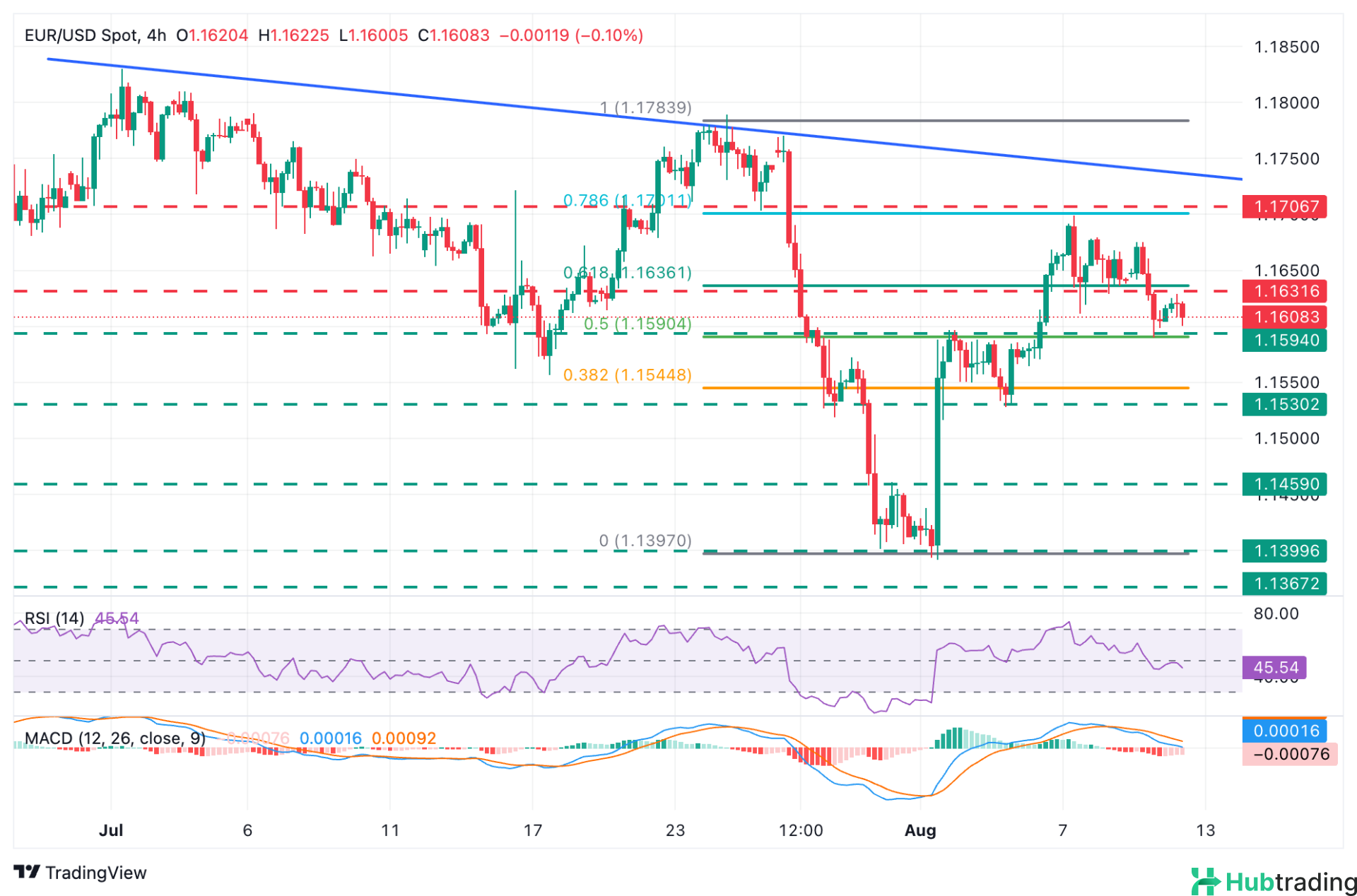-
The Euro holds just above the 1.1600 support level after retreating from 1.1700 over the past two sessions.
-
Downbeat economic sentiment data from Germany reinforces concerns about weakening momentum in the Eurozone’s largest economy.
-
Market attention turns to Tuesday’s US CPI report, anticipated to reveal rising inflationary pressures.
The EUR/USD pair remains subdued near 1.1595 in early European trading, after pulling back from last week’s high near 1.1700. Despite finding support at this level, the pair trades flat as investors digest disappointing German economic sentiment data and await key US inflation figures due later in the day.
Germany’s ZEW Economic Sentiment Index offered little encouragement, highlighting further deterioration in business confidence. The EU-US trade deal has added to existing concerns over the German economy’s sluggish momentum, with the ZEW report citing worsening outlooks in key sectors such as chemicals, pharmaceuticals, engineering, and metals.
Meanwhile, geopolitical developments continue to influence market sentiment. On Monday, The Wall Street Journal reported that Russian President Vladimir Putin proposed a ceasefire plan in exchange for territorial concessions in Eastern Ukraine—a proposal swiftly rejected by Ukrainian President Volodymyr Zelenskyy. Nevertheless, markets remain cautiously optimistic ahead of Putin’s scheduled meeting with US President Donald Trump in Alaska on Friday, hoping for progress toward a peace resolution.
The spotlight, however, remains on the upcoming US Consumer Price Index (CPI) data for July. With recent labor market data and dovish signals from Federal Reserve officials fueling expectations for a September rate cut, today’s CPI figures could prove pivotal. A stronger-than-expected inflation reading may dampen those rate-cut hopes, offering a potential boost to the US Dollar.
In global trade news, the US and China have agreed to extend their tariff truce by another 90 days, delaying the implementation of steep reciprocal tariffs. While largely priced in by markets, the development has added slight downside pressure to the safe-haven US Dollar.
Daily Digest Market Movers: Currencies Hold Steady in Holiday-Thinned Trade
- Currency markets opened the week on a quiet note, with most major pairs trading within familiar ranges amid subdued holiday trading. The US Dollar Index (DXY), which tracks the Greenback against a basket of major currencies, is flat after a modest rebound over the past two sessions.
- In Europe, sentiment weakened notably as Germany's ZEW Economic Sentiment Index dropped sharply to 34.7 in August from 52.7 in July—falling well short of the 40.0 consensus estimate. The Current Economic Situation index also deteriorated more than expected, plunging to -68.6 from -59.5, below forecasts of -65.0. These figures underscore growing concerns about the health of the Eurozone’s largest economy.
- Market participants are now eyeing the release of the US Consumer Price Index (CPI), the key data highlight of the day. Headline inflation is expected to have picked up to 2.8% year-over-year in July, up from 2.7% in June and 2.4% in May. Core CPI, a more policy-relevant measure that excludes volatile food and energy prices, is forecast to rise to 3.0% from the prior 2.9%.
- Later in the day, Federal Reserve officials Thomas Barkin and Jeffrey Schmid—both known for their hawkish policy stances—are scheduled to speak. Their comments may offer fresh insight into the Fed’s outlook, particularly in light of the day’s inflation data.
Technical Analysis: EUR/USD Support at 1.1600 Faces Growing Pressure
The EUR/USD pair remains under pressure following last week’s pullback from the 1.1700 region, although the broader bullish structure still holds for now. Bearish momentum is building, with the 4-hour Relative Strength Index (RSI) slipping below the neutral 50 mark and the MACD indicator turning negative.
Support has emerged around 1.1595, a level that previously acted as resistance in early August. However, the inability to reclaim the 1.1630 zone—Friday’s low—could embolden bears, setting the stage for a deeper decline. Below current levels, key downside targets include the August 5 low near 1.1530 and the July 31 high around 1.1460.
On the upside, a break above 1.1630 would be needed to restore short-term bullish momentum, with further resistance seen near 1.1700. This level aligns with the 78.6% Fibonacci retracement of the late-July drop, as well as the July 23 and 25 lows and a descending trendline currently near 1.1735.






